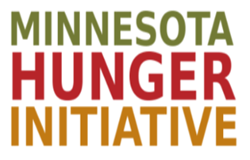What is a food desert? The USDA defines a food desert as a low-income area (census tract), where a significant number of residents live more than 10 miles from a big grocery store in rural areas or one mile in urban ones. How are we going to fix this problem? The Good Food Access Fund has a plan to increase access to healthy food for people in areas that are lacking in both transportation, availability, and income.
The Problem
-235,000 Minnesotans live more than 10 miles from a large grocery store or super market
-49 percent of Minnesotans report that not having a store nearby that sells healthy food directly impacts what they eat
-Minnesotans spend an estimated $2.8 billion each year on obesity-related health care costs alone
This means that thousands of Minnesotans don’t have access to healthy food whether it be because of distance, income, or both. This in turn contributes to rising obesity rates in these food deserts.
The Solution
The goal of the Good Food Access Fund is to attain new funding ($10 million per year) from Minnesota legislation that will go toward increasing availability and accessibility to affordable and nutritious food in food deserts. The bills have already started to build momentum and have been making their way through committees in both houses. If this legislation gets passed you can expect to see:
-Mobile markets/food shelves that bring food to those who are unable to get to a grocery store
-Increases in the number of farmer’s markets and grocery stores in underserved areas
-Boosted economic activity and new jobs available
-Improved overall health of people currently living in food deserts
To stay up to date on the progress of the Good Food Access Fund, like the Minnesotans for Healthy Kids Coalition Facebook Page. If you’d like to voice your support to your legislators, you can do so easily here.

